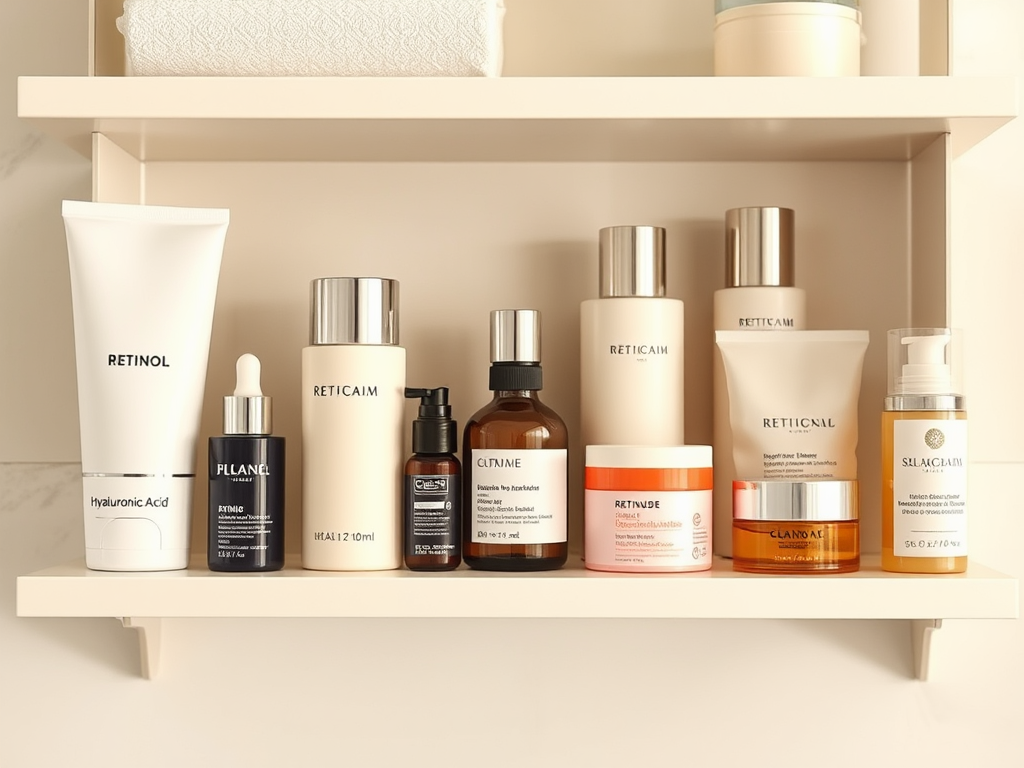For anyone passionate about skincare, the names hyaluronic acid and retinol likely evoke both excitement and curiosity. These two powerhouse ingredients have garnered substantial attention in the beauty industry, each known for their efficacious properties that target different skin concerns. As users increasingly seek dual-benefit formulas, understanding how to layer these two essentials can lead to remarkable improvements in skin texture and hydration. Achieving that proverbial glow involves not just slapping products on but mastering the art of application. Here, we delve deep into why proper layering is crucial, how to execute it flawlessly, and provide tips for safe usage—ensuring your skin reaps maximum rewards.
Before diving into the specifics, it’s essential to grasp what each ingredient offers. Hyaluronic acid is celebrated for its ability to hold up to 1,000 times its weight in water. This means that when applied correctly, it can keep your skin plump and hydrated. Retinol, on the other hand, excels at promoting cell turnover and collagen production, which are vital for maintaining youthful skin. Combining these two can bring about a symphony of hydration and rejuvenation, making it indispensable in many skincare regimens.
Understanding Hyaluronic Acid and Retinol

What is Hyaluronic Acid?
Hyaluronic acid acts like a magnet for moisture. It’s naturally found in the skin and is known for its ability to attract and retain water, leading to improved skin elasticity and diminished fine lines. Its lightweight texture makes it suitable for all skin types, from dry to oily. Particularly in dry climates or during the winter months, this ingredient can be a lifesaver. The magic lies in its ability to draw moisture from both the environment and deeper skin layers, locking it in for a plump, youthful complexion. Furthermore, incorporating it into your routine prepares your skin to better absorb other treatments that follow.
What is Retinol?
Retinol, a vitamin A derivative, holds a revered spot in the skincare hierarchy for its transformative abilities. This potent active promotes cellular turnover, unveiling fresher, smoother skin while combating signs of aging. Users seeking to reduce pigmentation, enhance texture, and minimize the appearance of pores will find retinol a valuable ally. However, its strength can render it irritating, especially for newcomers. Therefore, a gentle and informed approach is necessary to harness its full potential without compromising skin comfort.
Why Proper Layering is Important

Layering hyaluronic acid and retinol correctly is pivotal for maximizing their benefits. The improperly combined application can lead to irritation, negate the desired effects, and diminish overall skin health. When applied in the right order, these ingredients work synergistically to enhance hydration while reaping the reparative benefits of retinol. The foundation of effective layering lies in understanding how each ingredient functions and the optimal conditions for their absorption.
When to Use Hyaluronic Acid and Retinol
Timing is everything when it comes to applying skincare products. Generally, hyaluronic acid shines in your morning regimen, providing that essential hydration that prepares your skin for the day ahead. By keeping your skin well-hydrated, it acts as a barrier against environmental aggressors. On the other hand, retinol should be reserved for evening use. This is critical due to its sensitivity to sunlight, which can lessen its efficacy. Using retinol at night allows it to work collaboratively with your skin’s natural rejuvenation process while you rest, leading to optimal results.
| Ingredient | Benefits | Best Time to Use |
|---|---|---|
| Hyaluronic Acid | Hydrates, plumps skin, improves elasticity | Morning |
| Retinol | Reduces fine lines, enhances texture, promotes cell turnover | Night |
How to Layer Hyaluronic Acid and Retinol
The ideal application technique can significantly enhance the benefits of both products:
- Start with Clean Skin: Always cleanse your face to ensure there’s no residual makeup or impurities that can block product absorption.
- Apply Hyaluronic Acid First: After cleansing, use a few drops of hyaluronic acid on slightly damp skin for maximum efficacy.
- Wait a Few Minutes: Allow the hyaluronic acid to absorb before applying the next product—this helps in achieving layered hydration.
- Apply Retinol: Use a pea-sized amount, applying evenly across the face and avoiding sensitive areas.
- Follow Up with Moisturizer: To seal in moisture and protect the skin, apply a suitable moisturizer afterward.
Tips for Safe Use
Proper usage of hyaluronic acid and retinol can lead to significant benefits, but heed these essential tips to minimize risks:
- Patch Test First: Always conduct a patch test when introducing new products to determine how your skin will react.
- Start Slow: If you’re new to retinol, begin with once or twice a week, gradually increasing frequency as your skin adjusts.
- Hydrate Well: Using hyaluronic acid aids hydration, but ensure you continue moisturizing to curb dryness, especially when using retinol.
Conclusion
Mastering the art of properly layering hyaluronic acid and retinol opens the door to achieving vibrant, youthful skin. By understanding the unique properties of each ingredient and taking the time to apply them correctly, skincare enthusiasts can amplify the benefits and significantly enhance their routine. With dedicated diligence and careful application, the road to hydrated, rejuvenated skin lies at your fingertips, ensuring you can showcase your healthiest self.
Frequently Asked Questions
- Can I use hyaluronic acid and retinol together?
Yes, they can be used together, but proper layering is essential for minimizing irritation. - How often can I use retinol?
Beginners should start with 1-2 times a week, gradually increasing as tolerated. - Will using both ingredients cause irritation?
It can, especially if you have sensitive skin; ensure proper layering and hydration. - What is the best time to apply these products?
Use hyaluronic acid in the morning and retinol at night for optimal results. - Is it necessary to moisturize after applying retinol?
Yes, applying a moisturizer afterward can help soothe the skin and prevent dryness.





